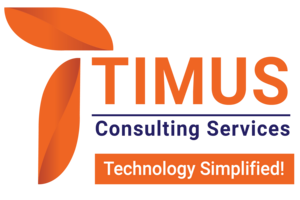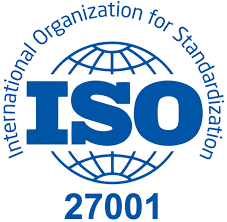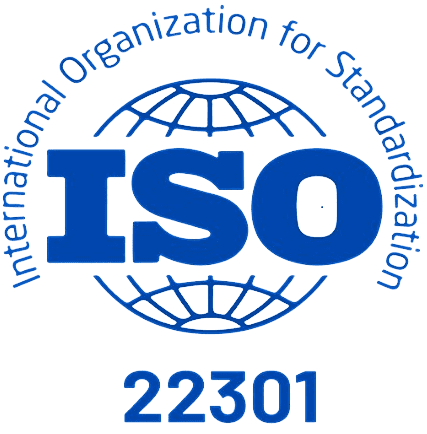Introduction to Operational Risk Management:
What it is and Why it Matters
Operational risk management is the process of identifying, assessing, and mitigating risks that arise from the day-to-day operations of a business. It involves understanding and managing the potential for losses resulting from inadequate or failed internal processes, people, and systems, or from external events. Operational risk management is a critical component of any organization’s risk management framework as it helps businesses protect their reputation, assets, and financial stability.
The importance of operational risk management in business cannot be overstated. Operational risks can have a significant impact on a company’s bottom line and can even lead to business failure if not properly managed. Examples of operational risks include fraud, human error, technology failures, supply chain disruptions, regulatory non-compliance, and natural disasters. These risks can result in financial losses, damage to reputation, legal and regulatory penalties, and operational disruptions. By implementing effective operational risk management practices, businesses can proactively identify and address these risks, minimizing their impact and ensuring the long-term success of the organization.
Identifying and Assessing Operational Risks:
Tools and Techniques
Identifying and assessing operational risks is a crucial step in operational risk management. There are several tools and techniques that organizations can use to identify and assess operational risks. One commonly used technique is risk identification workshops, where key stakeholders come together to brainstorm and identify potential risks. This can be done through facilitated discussions, interviews, or surveys. Another technique is the use of risk registers, which are databases that capture and track identified risks.
Once risks have been identified, organizations can use various methods to assess their potential impact and likelihood. One commonly used method is the risk matrix, which plots risks on a matrix based on their impact and likelihood. This helps organizations prioritize risks and allocate resources accordingly. Another method is scenario analysis, where organizations simulate potential risk events and assess their impact on the business. This can be done through tabletop exercises or computer simulations.
Risk mapping and prioritization is another important aspect of operational risk management. This involves mapping risks to specific business processes or functions and prioritizing them based on their potential impact and likelihood. This helps organizations focus their risk management efforts on the most critical areas and allocate resources effectively.
Mitigating Operational Risks:
Best Practices and Strategies
Once operational risks have been identified and assessed, organizations need to implement strategies to mitigate these risks. There are several risk mitigation strategies that organizations can employ. One strategy is risk avoidance, where organizations eliminate or avoid activities that pose significant risks. For example, a company may decide to exit a high-risk market or discontinue a product line that is prone to frequent failures.
Another strategy is risk reduction, where organizations implement controls and measures to reduce the likelihood or impact of risks. This can include implementing robust internal controls, conducting regular audits, and implementing redundancy measures to minimize the impact of system failures. Risk transfer is another strategy, where organizations transfer the financial impact of risks to another party through insurance or contractual agreements. This can help organizations mitigate the financial impact of risks and transfer the responsibility for managing these risks to a third party.
Business continuity planning is another important aspect of operational risk management. This involves developing plans and procedures to ensure that critical business functions can continue in the event of a disruption. This can include developing backup systems, establishing alternative suppliers, and implementing emergency response plans. By having a robust business continuity plan in place, organizations can minimize the impact of operational disruptions and ensure the continuity of their operations.
Building an Effective Operational Risk Management Framework:
Key Elements and Components
Building an effective operational risk management framework requires the integration of several key elements and components. These include governance and oversight, risk appetite and tolerance, policies and procedures, and risk culture and awareness.
Governance and oversight is the foundation of an effective operational risk management framework. This involves establishing clear roles and responsibilities for risk management, defining risk management objectives, and ensuring that there is appropriate oversight and accountability for risk management activities. This can be done through the establishment of a risk management committee or the appointment of a chief risk officer.
Risk appetite and tolerance is another important element of an operational risk management framework. This involves defining the level of risk that an organization is willing to accept in pursuit of its objectives. By establishing clear risk appetite and tolerance levels, organizations can ensure that risk-taking is aligned with their strategic objectives and that risks are managed within acceptable limits.
Policies and procedures are essential for effective operational risk management. These include policies and procedures for risk identification, assessment, mitigation, and monitoring. By having clear and well-defined policies and procedures in place, organizations can ensure consistency and standardization in their risk management practices.
Risk culture and awareness is another critical component of an operational risk management framework. This involves creating a culture where risk management is embedded in the organization’s DNA and where employees are aware of the importance of managing risks. This can be achieved through training and awareness programs, regular communication about risk management, and the establishment of incentives and rewards for good risk management practices.
The Role of Leadership in Operational Risk Management:
Setting the Tone from the Top
Leadership plays a crucial role in operational risk management. It is the responsibility of leaders to set the tone from the top and create a culture of risk awareness and accountability. Leaders need to demonstrate their commitment to risk management and ensure that risk management is integrated into decision-making processes at all levels of the organization.
One of the key responsibilities of leadership in operational risk management is creating a risk-aware culture. This involves fostering an environment where employees are encouraged to identify and report risks, and where risk management is seen as a shared responsibility. Leaders need to communicate the importance of risk management and provide the necessary resources and support for effective risk management practices.
Embedding risk management in decision-making is another important role of leadership. Leaders need to ensure that risk considerations are taken into account when making strategic decisions and that risk management is integrated into the organization’s planning and budgeting processes. This can be achieved through the establishment of risk management committees or the appointment of risk champions within the organization.
Leaders also have a responsibility to ensure that there is appropriate oversight and governance of operational risk management activities. This involves establishing clear roles and responsibilities for risk management, defining risk management objectives, and ensuring that there is appropriate oversight and accountability for risk management activities. Leaders need to ensure that there is a robust risk management framework in place and that there are mechanisms in place to monitor and report on risk management activities.
Operational Risk Management and Business Continuity Planning:
Ensuring Resilience and Recovery
Operational risk management and business continuity planning are closely related and interconnected. Business continuity planning is an essential component of operational risk management as it ensures that critical business functions can continue in the event of a disruption.
Business continuity planning involves developing plans and procedures to ensure that critical business functions can continue in the event of a disruption. This can include developing backup systems, establishing alternative suppliers, and implementing emergency response plans. By having a robust business continuity plan in place, organizations can minimize the impact of operational disruptions and ensure the continuity of their operations.
Operational risk management plays a crucial role in business continuity planning. By identifying and assessing operational risks, organizations can identify potential threats to their business continuity and develop appropriate mitigation strategies. For example, if a company identifies a high risk of supply chain disruptions, they can develop alternative sourcing strategies or establish backup suppliers to ensure the continuity of their operations.
Testing and exercising business continuity plans is also an important aspect of operational risk management. Organizations need to regularly test and exercise their plans to ensure that they are effective and that they can be implemented in a timely manner. This can involve conducting tabletop exercises, simulations, or full-scale drills to test the effectiveness of the plans and identify any gaps or areas for improvement.
Real-life incidents can provide valuable lessons for operational risk management and business continuity planning. Organizations should analyze and learn from real-life incidents to identify potential vulnerabilities in their operations and develop appropriate mitigation strategies. This can involve conducting post-incident reviews, sharing lessons learned with relevant stakeholders, and updating risk management and business continuity plans accordingly.
Operational Risk Management and Compliance:
Navigating Regulatory Requirements and Standards
Operational risk management is closely linked to compliance with regulatory requirements and standards. Regulatory requirements for operational risk management vary across industries and jurisdictions, but they generally require organizations to have robust risk management frameworks in place and to demonstrate that they are effectively managing operational risks.
Regulatory requirements for operational risk management typically include the establishment of a risk management framework, the identification and assessment of operational risks, the implementation of appropriate risk mitigation strategies, and the monitoring and reporting of operational risks. Organizations are also required to have appropriate governance and oversight of operational risk management activities and to ensure that there is appropriate accountability and transparency in their risk management practices.
Compliance frameworks and standards provide organizations with guidance on how to effectively manage operational risks and meet regulatory requirements. These frameworks and standards typically provide best practices and guidelines for risk identification, assessment, mitigation, and monitoring. They also provide guidance on governance and oversight, risk culture and awareness, and reporting and communication.
Internal audit plays a crucial role in operational risk management and compliance. Internal auditors are responsible for assessing the effectiveness of an organization’s risk management framework and ensuring that it is in compliance with regulatory requirements and standards. They conduct independent assessments of risk management practices, identify areas for improvement, and provide recommendations for enhancing risk management effectiveness.
External regulators also play a role in operational risk management and compliance. They are responsible for monitoring and enforcing compliance with regulatory requirements and standards. They conduct inspections and audits, review risk management practices, and impose penalties for non-compliance. Organizations need to ensure that they have appropriate mechanisms in place to respond to regulatory inquiries and to demonstrate that they are effectively managing operational risks.
Operational Risk Management and Technology:
Leveraging Tools and Solutions for Enhanced Risk Management
Technology plays a crucial role in operational risk management. It provides organizations with tools and solutions for identifying, assessing, and mitigating operational risks. Technology solutions for operational risk management include risk management software, data analytics tools, and artificial intelligence.
Risk management software helps organizations streamline their risk management processes and improve the efficiency and effectiveness of their risk management activities. It provides a centralized platform for capturing and tracking risks, conducting risk assessments, and monitoring risk mitigation activities. Risk management software also provides reporting and analytics capabilities, allowing organizations to generate real-time risk reports and dashboards for effective risk oversight.
Data analytics tools are another important technology solution for operational risk management. They help organizations analyze large volumes of data to identify patterns, trends, and anomalies that may indicate potential risks. Data analytics tools can be used to analyze internal data, such as transactional data or employee data, as well as external data, such as market data or social media data. By leveraging data analytics, organizations can gain valuable insights into their operational risks and make data-driven decisions to mitigate these risks.
Artificial intelligence (AI) is also increasingly being used in operational risk management. AI can help organizations automate risk management processes, such as risk identification and assessment, and improve the accuracy and efficiency of these processes. AI can also be used to develop predictive models that can forecast potential risks and their impact on the business. By leveraging AI, organizations can enhance their risk management capabilities and proactively manage operational risks.
While technology solutions offer many benefits for operational risk management, there are also challenges associated with their adoption. These challenges include data privacy and security concerns, the need for skilled resources to implement and manage the technology, and the potential for technology failures or glitches. Organizations need to carefully evaluate the benefits and challenges of technology adoption and ensure that they have appropriate governance and oversight in place to manage these risks.
Operational Risk Management and Human Factors:
Addressing the People Side of Risk Management
While technology plays a crucial role in operational risk management, it is important not to overlook the human factors involved. People are a critical component of risk management, and their behavior and actions can have a significant impact on operational risks. Therefore, organizations need to address the people side of risk management to ensure effective risk management practices.
Human factors in risk management include the knowledge, skills, and behaviors of employees, as well as the organizational culture and climate. It is important for organizations to provide training and awareness programs to ensure that employees have the necessary knowledge and skills to identify and manage operational risks. This can include training on risk management principles, risk identification techniques, and risk mitigation strategies. Organizations should also provide ongoing training and development opportunities to ensure that employees are up-to-date with the latest risk management practices.
Employee engagement and accountability are also important aspects of operational risk management. Organizations need to create a culture where employees are engaged in risk management activities and feel accountable for managing risks. This can be achieved through the establishment of clear roles and responsibilities for risk management, the provision of incentives and rewards for good risk management practices, and the promotion of a culture of open communication and transparency.
Leadership plays a crucial role in addressing the people side of risk management. Leaders need to lead by example and demonstrate their commitment to risk management. They need to communicate the importance of risk management and provide the necessary resources and support for effective risk management practices. Leaders also need to create a culture where employees feel comfortable reporting risks and raising concerns, and where there is a shared responsibility for managing risks.
Measuring and Reporting Operational Risk:
Metrics, KPIs, and Dashboards for Effective Risk Oversight
Measuring and reporting operational risk is essential for effective risk oversight. It allows organizations to monitor and track their risk management activities, identify trends and patterns, and make data-driven decisions to mitigate risks. There are several key risk indicators and metrics that organizations can use to measure and monitor operational risks.
Key risk indicators (KRIs) are specific metrics that provide early warning signs of potential risks. They are typically derived from historical data and are used to monitor the likelihood and impact of risks. For example, a KRI for fraud risk could be the number of fraud incidents reported per month. By monitoring KRIs, organizations can identify potential risks and take appropriate actions to mitigate them.
Risk reporting and communication is another important aspect of operational risk management. Organizations need to develop clear and concise risk reports that provide relevant and timely information to stakeholders. Risk reports should include information on the identified risks, their potential impact and likelihood, the effectiveness of risk mitigation strategies, and any emerging risks or trends. Risk reports should be tailored to the needs of different stakeholders, such as senior management, the board of directors, and external regulators.
Risk dashboards are a useful tool for visualizing and communicating risk information. Dashboards provide a snapshot of key risk indicators and metrics, allowing stakeholders to quickly assess the status of operational risks. Dashboards can be customized to display different types of risk information, such as risk heat maps, trend charts, or risk profiles. By
If you’re interested in learning more about operational risk management, you should definitely check out Timus Consulting’s article on the topic. In their comprehensive guide to operational risk management, they provide valuable insights and strategies to help businesses effectively identify, assess, and mitigate operational risks. This article is a must-read for anyone looking to enhance their understanding of this critical aspect of risk management. To access the article, click here.
About us:
We are Timus Consulting Services, a fast-growing, premium Governance, Risk, and compliance (GRC) consulting firm, with a specialization in the GRC implementation, customization, and support.
Our team has consolidated experience of more than 15 years working with financial majors across the globe. Our team is comprised of experienced GRC and technology professionals that have an average of 10 years of experience. Our services include:
- GRC implementation, enhancement, customization, Development / Delivery
- GRC Training
- GRC maintenance, and Support
- GRC staff augmentation
Our team:
Our team (consultants in their previous roles) have worked on some of the major OpenPages projects for fortune 500 clients across the globe. Over the past year, we have experienced rapid growth and as of now we have a team of 15+ experienced and fully certified OpenPages consultants, OpenPages QA and OpenPages lead/architects at all experience levels.
Our key strengths:
Our expertise lies in covering the length and breadth of the IBM OpenPages GRC platform. We specialize in:
- Expert business consulting in GRC domain including use cases like Operational Risk Management, Internal Audit Management, Third party risk management, IT Governance amongst others
- OpenPages GRC platform customization and third-party integration
- Building custom business solutions on OpenPages GRC platform
Connect with us:
Feel free to reach out to us for any of your GRC requirements.
Email: Business@timusconsulting.com
Phone: +91 9665833224
WhatsApp: +44 7424222412
Website: www.Timusconsulting.com






